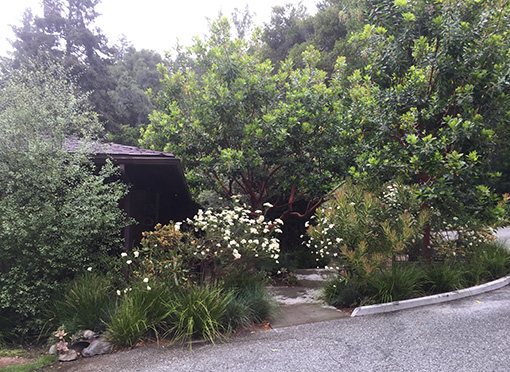Last weekend, we went to Sea Ranch and hiked across the coastal bluffs. It was a symphony of golden grasses, wild flowers, and broad leaf shrubs - all popping off a backdrop of dark green cypress trees and weathered wood houses. I thought of the teachings of Piet Oudolf and John Greenley, and loved this deeply contextual example of their ideas at work.
Please excuse the lack of scientific accuracy. I won't try to identify all these plants, but just call out their aesthetic characteristics. The intention here is to eventually find similar plants in cultivation, that could achieve a similar effect, in combination.
A) Monterey Cypress (Cupressus macrocarpa) - This provides wind protection and much needed dark green to make gold, silver and green elements pop.
B) Rhamnus californica - These bright green round mounds stand out amongst the vertical golden grasses. And, they bridge the height difference between the trees and the grassy plains.
C) Lupinus arboreus - How wonderful these were! Their silvery foliage, and their bright yellow flowers provide a great contrast and offer graphic interest close up.
D) Heracleum lanatum (Cow Parsnip) - At eye-level, these made the biggest statements in the landscape. Their broad leaves look incredible next to golden grasses, and low small-leaved shrubs - especially along pathways. And the shape of their flowers provide additional visual interest. And, they are available at Annie's Annuals!
E) Pteridium aquilinum var. pubescens (perhaps) - These green feathery ferns mix with the golden grasses in huge intermingled swaths. Does this indicate the presence of water?
F) Holcus lanatus and Elymus glaucus (perhaps) - Wheat-like pinkish grasses mix with tail-like golden grasses, forming a tonal textural tapestry.
G) Pink Penstemons or Salvias - Not sure which one these are, but their broad green leaves and pink flower stalks were found nestled in low grasses and ferns.
H) These green fuzzy sage-like plants co-mingle with golden grasses and Rhamnus, along the pathway.
I) Achillea millefolium - The interesting flower structure and white coloring peek out among the grasses.
J) Here, Achillea mixes with green broad leafed plants and lower bunchier grasses.
K) Thistle - Co-mingling with Rhamnus and a softer, luminous grass. Together, they were heavenly!
I) Pine - I found this guy a little further inland, closer to the Cypress trees and other piney family members.
I loved the dance of similarity vs contrast. Many times, two plants would be in stark contrast, with one additional plant, bridging the gap with similar color and/or form. Stay tuned for suggestions of cultivated counterparts and combinations.










